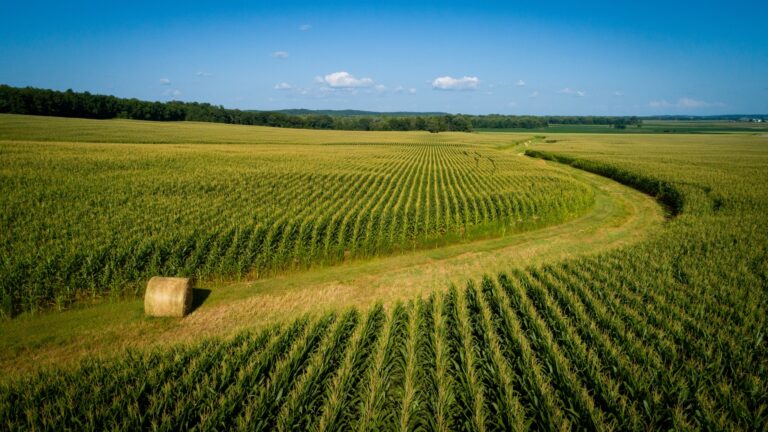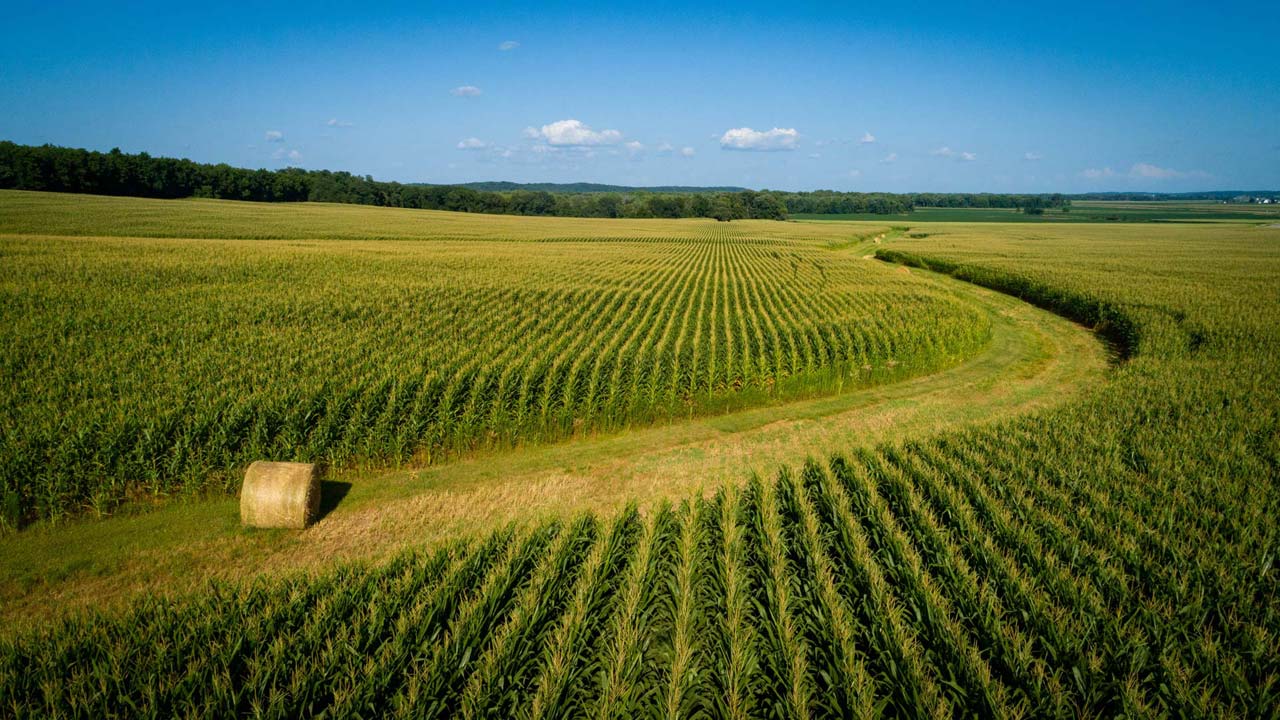2024 September Stewardship Advocate
CREP Wetlands
The Iowa Conservation Reserve Enhancement Program (CREP) is a multiple agency, public-private partnership that offers incentives to landowners who have a suitable landscape for installing a wetland. Wetlands provide many environmental and water quality benefits in the tile-drained regions of Iowa. One of the primary outcomes of wetlands is to have nitrogen in tile water “settle out” and be taken up by vegetation in the wetlands. Wetlands remove 40-90% of the nitrates and 90% of herbicides entering them from tile lines or surface runoff. In addition to greatly reducing nitrates and herbicides entering streams and rivers, wetlands also provide wildlife habitat, recreational activities and add beauty to rural landscapes.
The Iowa CREP wetland initiative is focused on the Des Moines lobe and surrounding counties and is limited to the 37 counties shaded in Figure 1. One important consideration is that the wetland must be located so it does not negatively affect the drainage rights of upstream and downstream landowners. This should be checked prior to construction by a contractor or engineer. The sign-up for CREP is on a continuous basis and can be done by contacting the Iowa Department of Agriculture and Land Stewardship’s Division of Soil Conservation, your local Farm Service Agency and the Soil and Water Conservation District office.
CREP Program Benefits
Landowners enrolling in CREP will receive:
- Up to 15 years of annual rental payments from USDA for all enrolled acres paid at 150% of the average soil rental rate.
- 100% cost-share for wetland restoration and buffer establishment.
- A one-time, up-front incentive payment to enter into either a 30-year or perpetual easement.
Wetlands in Iowa
As of January 2024, 133 CREP wetlands were built in Iowa, with 59 more in the design phase. The goal of the Iowa CREP initiative is to build 30 CREP wetlands per year. In addition to CREP wetlands, there are other programs that provide financial incentives for nutrient removal wetlands. These funds are often a combination of government and private dollars. Nick Helland, an Iowa Corn Research and Business Development committee member and farmer in Polk County used multiple funding sources to construct a wetland on his farm during the summer of 2024. Figures 2, 3 and 4 show several before and after photos of his wetland. Figure 5 shows a mature wetland in Floyd County.

Figure 1. Map of eligible counties for CREP wetlands.

Figure 2. Nick Helland’s wetland before construction.

Figure 3. Nick Helland’s wetland during construction.

Figure 4. Overflow weir on Nick Helland’s wetland. Photo credit – Nick Helland

Figure 5. Floyd County Wetland. Photo credit – Soil and Water Conservation Society
Latest Information:
September WASDE Surprise: USDA Raises Corn Yield, Leaves Soybean Yield Stagnant
Cost Share Comparison (costsharecompare.com)
U.S. Braces for a Hotter and Drier Fall as La Niña Looms
EPA Responds to Industry Concerns with Risk Assessment Methodologies
EPA releases draft of insecticide strategy for comment
What does EPA’s finalized herbicide strategy mean for the ag industry?
Farmer to Farmer: Alyssa and Zac Preston

Alyssa Preston and her husband Zac raise corn, soybeans and alfalfa in Warren County Iowa. They have been actively farming for 10 years with business partner Blake Reynolds. Zac’s off farm job is also connected to the operation as the shop manager and planter expert at a precision ag company.
Preston’s farming philosophy is to be profitable, grow their operation, be good stewards and leave a legacy for the future. Alyssa says, “While we rent the ground we farm today, we have a goal of having farm ground that we can call our own. We have young children and are raising them to appreciate the opportunity to live on a farm just like Zac and I did growing up.”
The Prestons plant 103-112 day corn at a rate of 32,000-36,000 seeds per acre. They apply all of their nitrogen in the liquid form, splitting it between with the planter and coming back in June with a side-dress application. Their operation is 100% no-till on both corn and soybeans.
The 2024 planting season was more extended than usual. Alyssa said, “We usually like to start planting in mid-April and have all of the crops in the ground by mid-May. The challenge this spring was Mother Nature handed us a cold and a rainy spell which delayed us a bit. This spring we started planting in early April and did not finish until the end of May. Plus, we had to replant some of our corn.”
Despite some challenges during the planting season, their corn crop got adequate moisture during the growing season. They started corn harvest on September 12 with outstanding yields. Alyssa says, “Spreading out our maturities gives us a lot of flexibility during the spring and the fall. We can pick and choose the fields to harvest first and then work our way through the rest of the harvest.”
“We are young farmers that work very hard to make a good life for our family. We also know the value and importance of partnerships and working together,” shared Alyssa. “We know that soil is our most important farm asset so we are doing our best to not only preserve it but to make it better. No-till has been our go-to choice because it saves time and preserves the soil.”
Alyssa is the Iowa Corn District 9 Field Manager covering 11 counties in south central Iowa. Serving the role for nearly 10 years, she is passionate about working with Iowa Corn’s grassroot members and the many farmers she encounters on a daily basis.
In addition to their day jobs, the Prestons are actively involved in several local organizations and know the importance of giving back to their community. Alyssa and Zac serve on the Young Farmer Advisory Council for Iowa Farm Bureau where Alyssa is the public relations co-chair and Zac is the chair. Alyssa also serves on the Warren County Extension Council. Zac is president of the Warren County Farm Bureau and they both are involved with the Warren County Fair.
Upcoming Events:
October 9: INRC Fall 2024 Water Research Seminar Series: Trends | Iowa Nutrient Research Center, Register at https://go.iastate.edu/WYDMXJ to participate online.
October 9: 10/9: Meaghan Anderson, Iowa State University, Waterhemp Is Killing Us, but Can Cover Crops Save Us? Events – Iowa Learning Farms
October 26: Establishing Prairie: Selecting Seeds to Restore and Optimize Native Habitat; Establishing Prairie – Practical Farmers of Iowa

